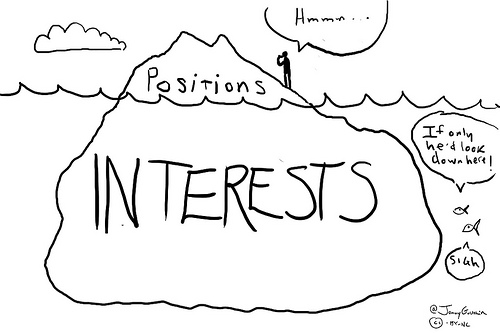
There’s no doubt that NLP techniques can be used to make you more successful in your professional life. Whether you want to use these methods to become a more effective salesperson or to simply drive change in your workplace, the use of these tactics in the world of business is well-established.
But what if you’d like to translate these techniques to other aspects of your life? If NLP can make you more persuasive in your dealings with other people, shouldn’t it also be able to help persuade your subconscious to cultivate positive personal habits?
The answer is a resounding, “Yes!” Whether you want to use these tactics to lose weight by eliminating sweets cravings and increasing your motivation to get to the gym, or you need the extra encouragement to make progress on a personal project, the principles of NLP can be easily adapted to drive change in your personal – as well as your professional – life.
Here’s how to do it…
“Anchors”
The first technique that can be used to motivate positive change in your personal life is the “anchor.”
Personal Development Planet defines this technique thusly: “An anchor is simply a connection between a stimulus and a certain emotional response.” In the popular psychology experiment conducted by Pavlov on a group of hungry dogs, the bell that signaled the arrival of food was used as an anchor device that transmitted the state of upcoming satiation to the canine participants.
When used properly in your own life, being able to create and manipulate these anchor associations can provide powerful benefits. For example, suppose you’re trying to woo a potential partner, but feel awkward and uncomfortable every time you’re around this person. Now, imagine how much more smoothly your courtship would proceed if you were able to dial up feelings of self-confidence and assuredness on command.
To create anchors, you first need to identify the emotional state you’d like to achieve on command, as well as the signal you’ll use to trigger this state (typically a single word said out loud or a specific hand gesture). Then, visualize an experience from your past when you felt your desired emotional state strongly while repeating your chosen signal. Following our dating example, to be able to fire a “confidence” anchor, recall a situation from your past when you felt powerfully confident.
Relive every part of this experience while practicing with your anchor signal. As the anchor becomes more defined in your mind, you should be able to call it up at will by deploying your physical signal.
Visualization Exercises
The use of these anchors enables you to tie a specific emotion or feeling to a particular hand gesture. And while this can be incredibly useful in defusing awkward or uncomfortable situations, it’s limited in that each anchor only ties to a single emotion.
Now, imagine you’re sitting face to face with the object of your affection. At some points in your conversation, you might want to be able to call up your “confidence” anchor – but you might also want to make yourself appear witty, self-deprecating or charming. And that’s a lot of anchors!
So in order to ensure that your anchors are reserved for the most powerful emotions you want to call up, you’ll want to make use of another NLP technique – visualization – to motivate positive changes in your personal life.
Visualization is an incredibly powerful technique because it gives our minds a template to work off of. Simply saying, “I wish I wasn’t so awkward” or “I wish I was more motivated” isn’t that helpful, because it doesn’t give our brains a framework for promoting positive change. Neither one of these negative statements describe alternative behaviors, which leaves our minds frustrated, but unable to produce meaningful change.
Instead, by visualizing how we’d like situations to unfold, we give our brains a blueprint for creating positive actions. To use visualizations effectively, imagine your desired scenario unfolding from three different angles:
- From your own perspective, within your own mind,
- From the perspective of an outsider who’s interacting with you, and
- From the perspective of a neutral third party.
For example, if you want to have more motivation to go to the gym regularly, start by visualizing yourself coming home from work, changing into your gym clothes and going to get in a good workout. Then, change your visualization to imagine what someone you interact with at the gym sees in your behavior. Does this person see a tired, dejected person dragging himself through his workouts, or does he see a fit, energetic person upon which he can model his own behavior?
Finally, imagine the scene as if you’re watching it unfold from above. How do the people in your visualization behave and interact with each other? Seeing them modeling the behaviors you’d like to address in your own life makes this tool a powerful way to drive changes to your own personal habits.
Image: ElDave





